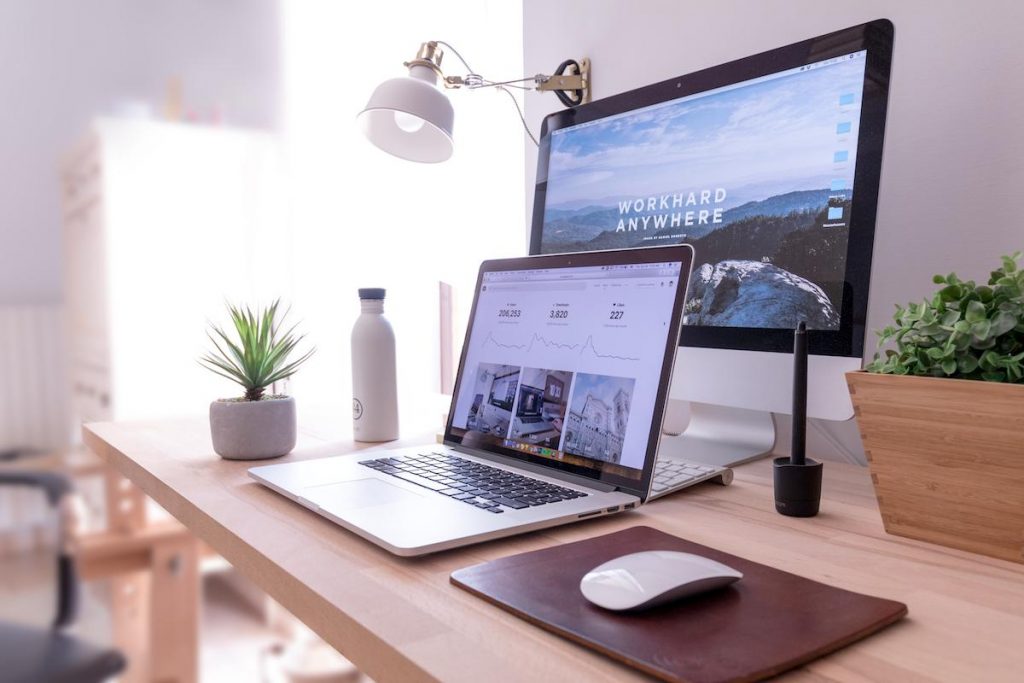In the months since the global outbreak of Covid-19, more people have become familiar with remote working arrangements. And while there are considerable benefits to working from home, we have to overcome several challenges.
Many remote workers see this as a chance to kill two birds with one stone. They can carry out long-desired home improvements in the name of setting up an ideal office space. You get to upgrade your home while addressing work-related issues, through ergonomic furniture or a new monitor, for instance.
Yet backaches and eyestrain are only some of the problems associated with remote work. These concerns have been raised even before the pandemic. It might seem unlikely, but can your renovations somehow address the decreased quality of social interactions? Or the risk that working from home will lead to career stagnation?
Clear out the background
In a traditional office, people are expected to follow a dress code. Companies will fall on different lengths of the spectrum from casual to formal, but few workplaces allow workers to come in wearing shorts and flip-flops.
We tell ourselves not to judge others by looks alone, but instinctively, we know that appearances matter. If you want to be taken seriously, you dress respectably. It makes you feel more confident, and it changes the way people perceive you.
That still applies when you work from home. On a video call, you don’t wear your PJs, even if you could do so. At least not if you want to impress your boss.
And it extends to your surroundings. Don’t resort to virtual backgrounds to cover up the mess in your work area. Take the time to clear out the clutter and distracting visuals as you set up a professional home office.
Establish house rules with your family or roommates. While some teams appreciate the occasional glimpse into your personal life, it’s best to err on the side of professionalism. Your kid might make an unavoidable cameo now and then, but if they are constantly seen running around, they can distract everyone. People might wonder how productive you can be offscreen.
It’s not just about what people see on your virtual meetings. It’s how organized, efficient, and confident you’ll feel when you’re in an environment designed to be conducive to your work.

Improve lighting and sound
One of the biggest challenges to effectively working on a remote basis is centered on communication. When you’re on a video call with someone, they can hear your voice and see your face. But they miss out on some nonverbal cues, such as posture, gestures, and body language.
And that’s the best-case scenario. On a video conference, everybody’s share of on-screen real estate is shrunk into fractions of a display. Phone calls lose the visual element completely. Chats and emails do away with the human voice.
Anyone who’s strategically placed LED bollard lights in their garden knows that good lighting can make a world of difference. The outdoors can be equally as enjoyable by night as they are during the day. Don’t let your home office languish in poorly illuminated conditions.
Learn from professional video producers about how you can look and sound better on a call. Many vloggers use a ring light or softbox to appear more engaging in their videos. They also use noise-canceling external microphones instead of relying on the default audio device on their computers.
Optimize your settings
The quality and settings of your connection can be another limiting factor when it comes to effective communication. Sometimes, simply moving closer to the router can make a world of difference.
You also want to minimize obstructions and sources of interference. It doesn’t help your cause if a nearby microwave causes you to lose connection or glitch over on video calls. Consider changing your layout to optimize the connection in your workspace.
Remember that when you’re streaming video, your device is essentially capturing and transmitting around 30 pictures of you each second. That requires a fair amount of processing power and bandwidth. Your colleagues might not see what other apps or tabs you’ve opened, but they will certainly feel it when those programs start competing for your system resources.
Finally, don’t forget to share these tips and best practices with the rest of your team. Virtual communication might never really replace face-to-face interactions. But if changing things around the home office can come closer to approximating those, you can help offset many of the associated challenges.

